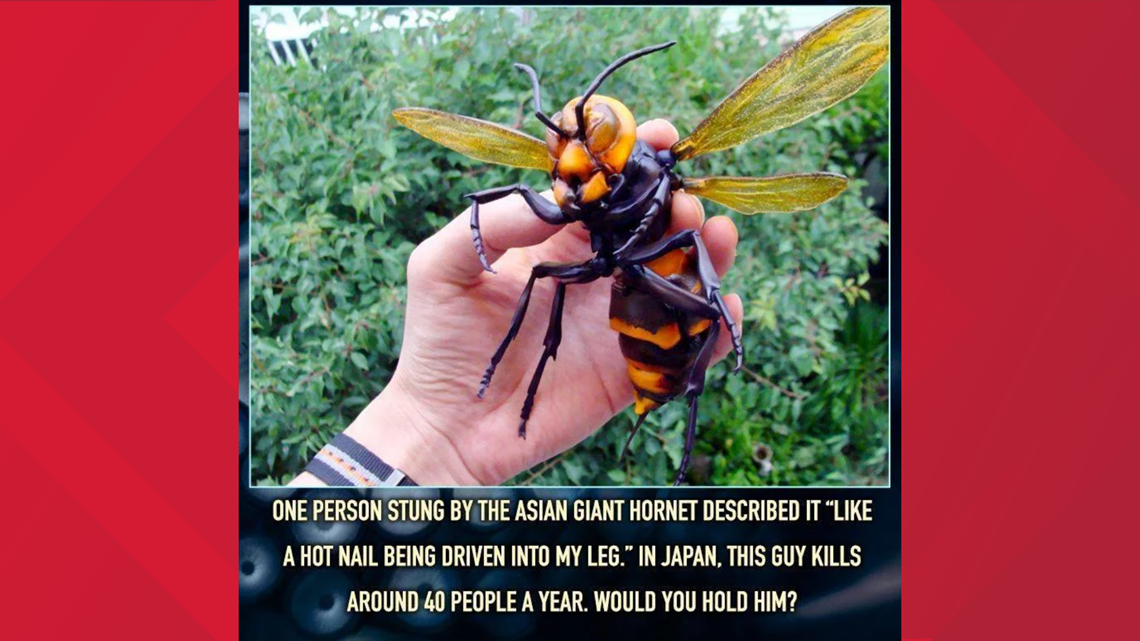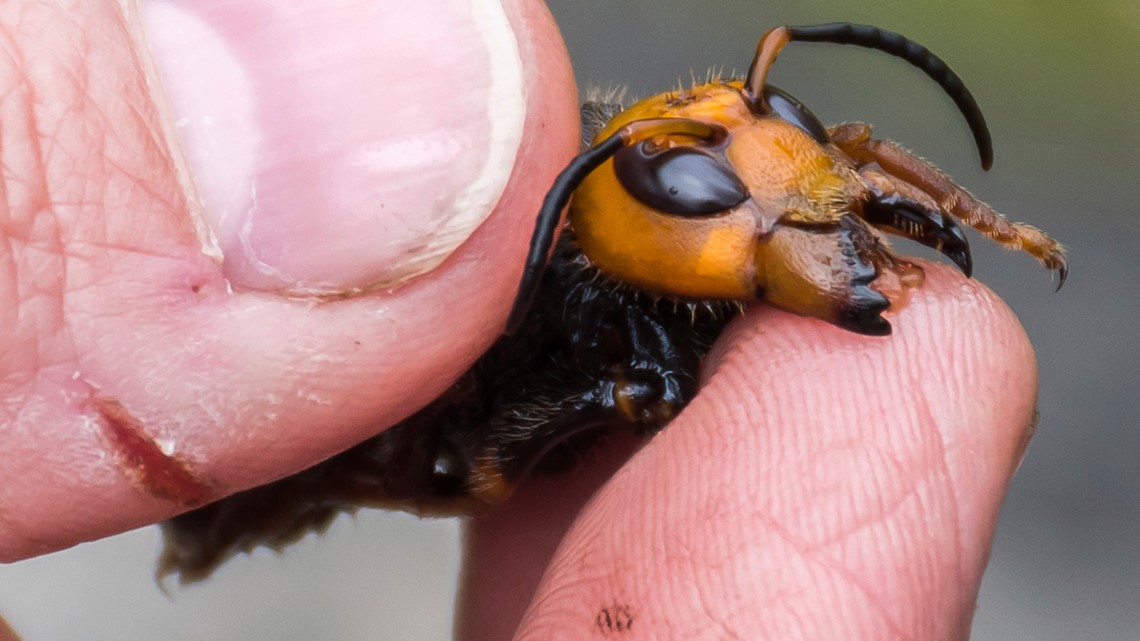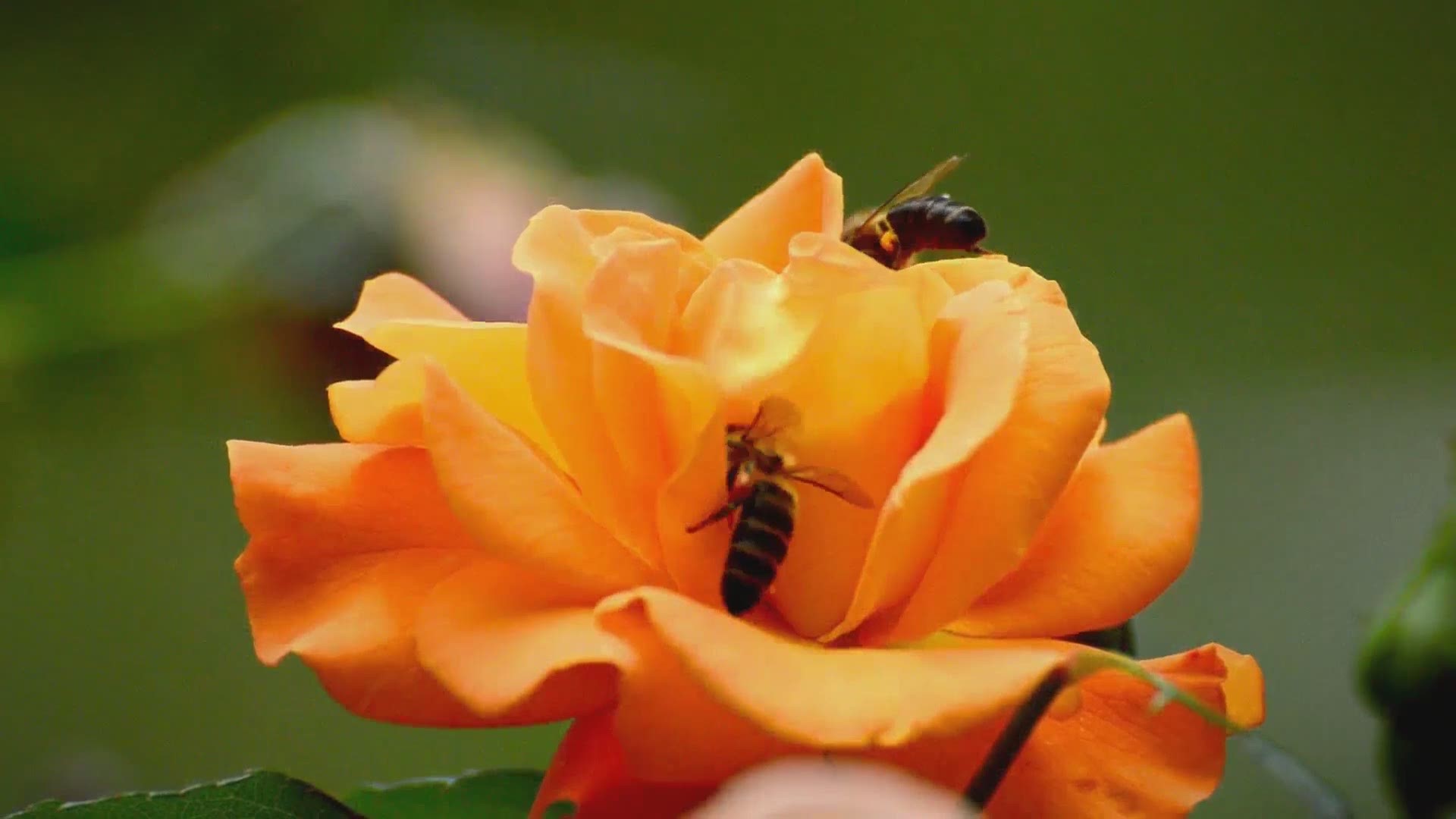There was an unexpected entry into the news cycle last weekend which caused a buzz on social media and across the web. Murder hornets had entered the United States. They had quietly made their first appearance in December of 2019, just before the COVID-19 outbreak hit.
Hornets are already unpopular and an object of fear, but when you add the "murder" qualifier, that fear hits a whole new level.
So what actually are these insects? Are they as frightening as their name sounds? Should we be concerned?
The VERIFY team jumps in to explain what these hornets are.
WHAT WE FOUND
These hornets, actually called Asian giant hornets, are in the United States currently. But only in Washington state at the moment. In fact, the only other place in North America they have been discovered is just north of Washington state along the pacific coast of Canada.
Because of this, the Washington State Department of Agriculture (WSDA) has a page dedicated to the Asian giant hornet. This page explains a few of their characteristics that contribute to their frightening new nickname.
First of all, they’re about 1.5 to 2 inches long. Yellow jackets, in comparison, are about half an inch long. The red paper wasp -- the wasp species that is spread all across the eastern United States -- is about half an inch to 1 inch long. So it’s much bigger than most wasp and hornet species you’d come across.
They also have a reputation for destroying hives of honeybees, which is why Washington state wants to make sure they can get them under control before the species begins spreading. The WSDA says they kill bees by decapitating them and then feed them to their young. A few hornets can do this in a matter of hours and will then defend the hive as their own.
Finally, the hornets have a stinger that is longer than that of a honeybee and their venom is more toxic. While they do not typically attack unless they feel threatened, they will sting repeatedly when they are. Typical beekeeping protective clothing does not protect against their stings.
But we have to pump the breaks on the fear around these hornets after that.
Their stings are more toxic than that of many other bees and wasps and yes, people with bee and wasp allergies absolutely should avoid them and seek medical attention if they are stung.
The WSDA said stings can be serious and even life threatening if you are stung repeatedly or are allergic to stings. However, these hornets are not killing people en masse like the name "murder hornet" may imply.
A tally of annual Japanese deaths to wasp, bee and hornet deaths in the country found that that there has been just 176 deaths to all wasps, bees and hornets, not just Asian giant hornets, in any given year over the last decade. The USDA gave a slightly higher estimate for Japan’s annual Asian giant hornet death tally: 30-50 a year. Japan is one of the countries the Asian giant hornet is native to.
It’s also important that you don’t get a skewed perspective of their size.


Some news articles and social media posts use the image in the meme above to show the Asian giant hornet. But that’s not a real hornet. It’s a sculpture.
The Japanese artist who made the sculpture uses the same image of it on their website. They have the size and price of the hornet attached.
The hornet is big, but not nearly that big. The image below is what one looks like when held in someone’s hand.


These hornets are still a problem. The WSDA says there have been two reports of them in Washington state and they’ve been found in two locations in Canada. They are an invasive species and can wreak havoc on local bee populations if they spread.
Avoid these hornets -- especially if you’re allergic -- and report them to your state’s agriculture department if you see them. If you’re allergic and stung by one, you should seek medical attention.
However, don’t expect to open your front door tomorrow and see them swarming. It’s important to keep an eye out for them so you can report, but right now there have been very few sightings in the United States.
The WSDA is hoping to keep it that way.
RELATED: VERIFY: What is remdesivir?

